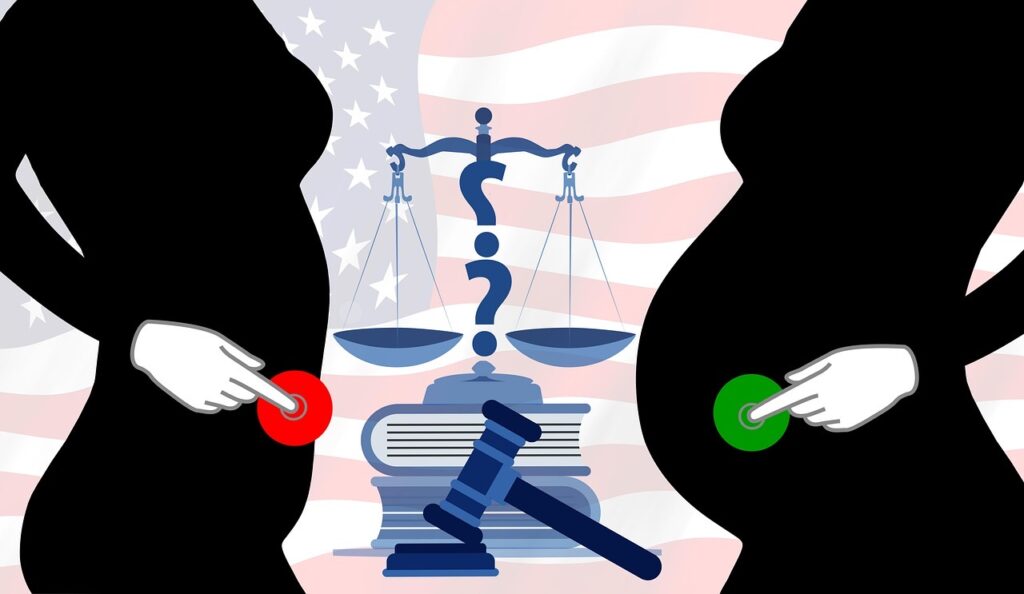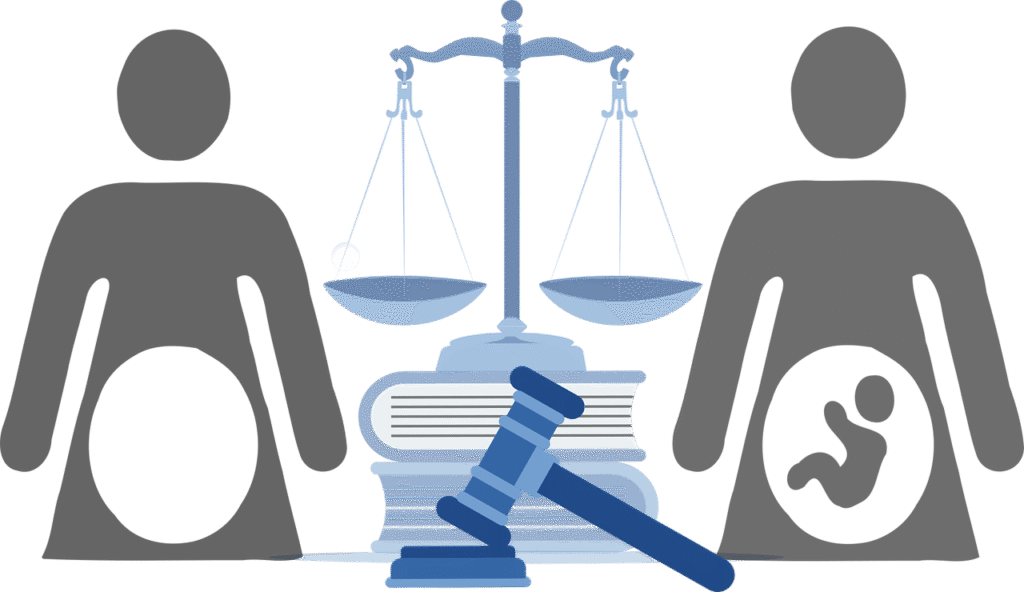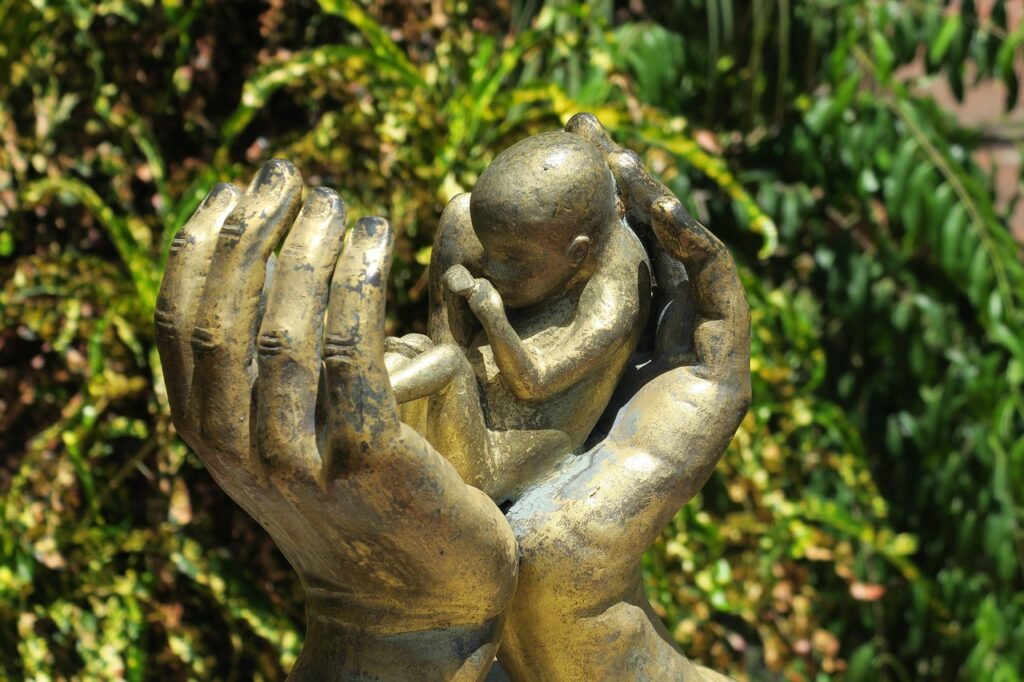
Modern Women’s Views vs. Islamic Thoughts on Abortion:
Bridging Faith and Feminism
Modern Women’s Views vs Islamic Thoughts on Abortion: Modern women are increasingly advocating for unrestricted access, whereas Islamic jurisprudence permits abortion before 120 days under specific conditions.
A substantial gender disparity in abortion support is evident in the fact that 61% of women in the United States identify as “pro-choice” in the post-Roe era.
Table of Contents
Both frameworks prioritise maternal health; however, they differ in their approaches to foetal personhood and physiological autonomy.
14% of women in states that prohibit abortions report experiencing personal difficulties in obtaining medical care, underscoring the disparity between policy and reality.
Islamic Perspectives: Mercy Within Sacred Boundaries
Islamic thought employs a multifaceted ethical framework that balances the divine sanctity of life with compassionate exceptions in the context of abortion. The Qur’an expressly prohibits the killing of children “for fear of poverty” (17:31), thereby establishing the sacredness of life. The 120-day ensoulment principle, which is often cited by scholars, is derived from a prophetic tradition that describes the phases of foetal development that culminate in divine breath (ruh). This demarcation establishes essential boundaries:
Pre-120 Days: Allowable in numerous educational institutions with valid justifications:
Hanafi: The most lenient, permitting abortion for a wide range of socioeconomic or health issues
Shafi’i/Hanbali: Acknowledge significant foetal abnormalities or maternal health threats
Maliki: Abortion is generally prohibited from the moment of conception.
Modern Women’s Views vs Islamic Thoughts on Abortion:

Modern Women’s Views VS Islamic Thoughts on Abortion.
Post-120 Days: Strictly prohibited, except for maternal life endangerment, which is regarded as the “lesser of two evils” due to the importance of the mother’s established life. Twenty-six. Iran permits thalassaemia diagnoses before 16 weeks, while Bosnia permits abortions for rape victims before ensoulment.
Table: Islamic School Positions on Abortion Timing
| School | Permitted Period | Acceptable Grounds |
| Hanafi | Up to 120 days | Socioeconomic hardship, health |
| Shafi’i | 40-80 days | Maternal health, fetal abnormalities |
| Maliki | Generally prohibited | None (life begins at conception) |
| Hanbali | Up to 40-120 days | Maternal life, severe fetal defects |
The overarching principle remains: God’s mercy (rahmah) contextualises rulings, despite theological diversity. According to scholar Zahra Ayubi, pre-modern jurists prioritised the preservation of maternal life over the determination of life’s origins.
Contemporary Women’s Perspectives: Rights, Access, and Lived Experiences

The abortion views of post-Roe Americans are marked by a stark gender polarisation. According to Gallup data, 41% of men and 61% of women currently identify as pro-choice, a 20-point disparity that represents the most significant divergence in polling history. This change is the result of tangible experiences:
Barriers to Access: Personal or proximal struggles obtaining care are reported by 14% of women in abortion-ban states, and this figure rises to 21% among reproductive-age women. A total of Travel expenses and wage losses pose additional obstacles for women with lower incomes.
Healthcare Framing: Legal abortion is supported by a majority of individuals in all state policy categories, with 67% of those in ban states viewing it as essential healthcare rather than a moral failure.
Generational Solidarity: The political realignment around reproductive rights is being driven by 76% of women under 30 who support legal access.
illustrates the demographic support for legal aborti in the United States.
Table: Demographic Support for Legal Abortion in U.S.
| Group | Support Legal Abortion | Key Factors |
| Women 18-29 | 76% | Personal autonomy, healthcare access |
| College Graduates | 68% | Education correlates with support |
| Black Women | 73% | Disproportionate maternal mortality |
| Republican Women | 41% | Intra-party policy misalignment |
Notably, Partisan loyalty does not predict lived experience, as evidenced by the fact that 12-15% of Republican, Democratic, and independent women report having abortions, confirming its cross-demographic prevalence.
Divergences and Critical Intersections
Despite their apparent differences, both frameworks exhibit unexpected similarities:
Maternal Primacy: The life and health of the pregnant individual are prioritised by both Islamic jurists and modern advocates, surpassing the potential of the foetus.
Compassionate Exceptions: The exceptions that 59% of U.S. women support in certain fatwas regarding rape are similar at 21.
Nevertheless, fundamental tensions continue to exist:
Autonomy vs. Personhood: Islamic regulations are founded on the stages of foetal development, whereas contemporary feminism emphasises corporeal sovereignty, irrespective of gestation.
Structural Solutions: In contrast to Islam’s case-by-case mercy model, 81% of women in states with legalised abortions advocate for federal protection. Beyond Monolithic Narratives
Conclusion: Beyond Monolithic Narratives
The abortion discourse is not limited to simplistic binaries. Modern women advocate for systemic reproductive justice, which encompasses not only legality but also economic constraints and information accessibility. Islamic philosophy emphasises contextual ethics, prioritising divine mercy over rigorous dogma. Both deny the concept of blanket criminalisation, acknowledging that lived experiences necessitate nuance. In order to achieve humane solutions that respect both faith and autonomy, it is imperative to recognise these multidimensional perspectives as policy battles are intensified.
FAQ: Modern Women’s Views vs Islamic Teachings on Abortion
1. When is abortion allowed in Islam?
Pre-ensoulment (≤120 days): Permitted for significant reasons:
Threats to the mother’s life or health.
Severe foetal anomalies (e.g., genetic problems that can’t be treated).
Rape and incest (not widely accepted; different schools have different rules).
After the soul has entered the body (more than 120 days), it is not allowed to do anything except preserve the mother’s life.
The main idea is to find a balance between the sanctity of the foetus and humanitarian exceptions (rahmah).
2. What do contemporary women support?
Main demand: The right to control one’s own body.
Legal access: 61% of women in the U.S. say they are “pro-choice” (Gallup, 2023).
Main goals:
67% of people in states with severe abortion laws support abortion as healthcare.
Getting rid of economic barriers (costs of travel, missed wages).
Federal protection (supported by 81% of states that allow abortion).
3. Is there any agreement between Islamic rulings and feminism?
Yes, on two important points:
Maternal life priority: Both prioritise the mother’s life over the fetus’s.
Some Islamic scholars and 59% of modern women approve exceptions for rape/incest.
4. What are the main ways they are different?
Islam: Life starts at ensoulment (120 days); abortion beyond that is like killing someone.
Modern feminism: Personhood starts at viability or birth; autonomy is more important than foetal rights.
Islam: The Quran (17:31) says that socio-economic difficulty is not a good reason for abortion.
Modern feminism sees financial stability as a valid motive (29% of women seeking abortions said this).
5. What are the differences among Islamic schools?
School’s Timeline for Abortion-Allowed Grounds
Hanafi ≤ 120 daysHealth and socioeconomic difficulties
Shafi’i/Hanbali: 80–120 daysMaternal life, severe foetal anomalies
Maliki: Not allowed (in general), Only to save mom’s life
Shia (e.g., Iran) ≤16 weeksProblems with the foetus, health of the mother.
6. What is the most important policy disagreement right now?
Criminalisation: Women today don’t want bans (related to 21% of maternal health issues in places with bans).
Islamic law (Sharia) considers abortions beyond 120 days to be crimes; however, it only controls early abortions instead of banning them.
